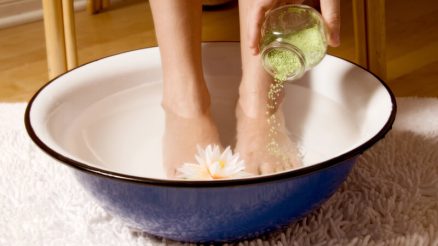Toenail fungus, medically known as onychomycosis, is a common condition that affects millions of people worldwide. Characterized by thickened, discolored, and brittle nails, toenail fungus can be both a cosmetic nuisance and a health concern if left untreated. Fortunately, with the right combination of treatment, hygiene, and prevention strategies, you can successfully eliminate toenail fungus and restore your nails to health.
What Causes Toenail Fungus?
Toenail fungus is typically caused by dermatophytes, a group of fungi that thrive in warm, moist environments. Yeasts and molds can also contribute to fungal infections. The condition is contagious and can be picked up in communal showers, gyms, or even from sharing nail clippers or shoes.
Risk Factors
- Wearing tight, non-breathable footwear
- Sweating excessively
- Walking barefoot in public areas
- Having a history of athlete’s foot
- Weakened immune system
- Diabetes or circulatory issues
Symptoms of Toenail Fungus
- Yellow, white, or brown discoloration of the nail
- Thickened or distorted nail shape
- Brittle, crumbly, or ragged nails
- Foul odor
- Separation of the nail from the nail bed (onycholysis)
Treatment Options
Treating toenail fungus requires patience and persistence. Depending on the severity and extent of the infection, you may need to try multiple strategies or a long-term regimen. Here are several treatment methods that can be used individually or in combination:
1. Over-the-Counter Antifungal Products
Topical antifungal products are typically the first line of defense for mild fungal infections. These are available in pharmacies without a prescription and come in various forms such as creams, ointments, sprays, and medicated nail lacquers. Common active ingredients include clotrimazole, miconazole, tolnaftate, and terbinafine. While easy to use, these products may take several months of consistent application to show improvement, especially if the fungus has penetrated deeply into the nail bed.
2. Prescription Medications
When over-the-counter options prove ineffective or the infection is more advanced, a doctor may prescribe stronger medications:
- Oral Antifungals: Medications like terbinafine (Lamisil) and itraconazole (Sporanox) are often prescribed for systemic treatment. They typically require a course of 6 to 12 weeks and work by helping the nail grow out free of infection. However, they may interact with other medications and can affect liver function, so periodic blood tests are usually required.
- Topical Prescription Treatments: Prescription-strength lacquers such as ciclopirox (Penlac) and efinaconazole (Jublia) are applied directly to the infected nail and surrounding skin. These treatments are less invasive but require prolonged daily use, often for up to a year.
3. Laser Therapy
Laser treatment involves targeting the fungus with high-intensity light pulses, penetrating the nail without damaging surrounding tissue. While promising, this method varies in effectiveness and typically requires multiple sessions. It’s considered safe and painless, though its high cost and limited insurance coverage can be barriers for some patients. Clinical outcomes are still being studied to determine long-term success rates.
4. Home Remedies
Natural remedies are popular among those seeking non-pharmaceutical approaches. While anecdotal evidence supports their use, results may vary, and consistency is crucial. Common options include:
- Tea tree oil: This essential oil has antifungal and antiseptic properties. Apply it twice daily with a cotton swab, ensuring it penetrates beneath the nail edge.
- Vicks VapoRub: Contains thymol, menthol, and camphor, which may slow fungal growth. Apply a small amount to the affected nail daily.
- Apple cider vinegar: Known for its acidity, which may inhibit fungal growth. Soak feet in a mixture of equal parts vinegar and water for 15–20 minutes daily.
- Garlic extract: Rich in allicin, a compound with antifungal properties. Garlic can be crushed and applied directly or taken orally in supplement form.
While home remedies can support the healing process, they are best used as adjuncts to medical treatment rather than standalone cures—especially in more advanced cases.
Hygiene and Prevention Tips
Preventing reinfection and supporting treatment efforts are key to success. Implementing good foot hygiene and lifestyle habits can significantly improve treatment outcomes and reduce the risk of recurrence:
- Keep feet clean and dry: Wash your feet daily with soap and water, and dry them thoroughly, especially between the toes, to prevent moisture buildup.
- Change socks daily: Opt for moisture-wicking socks made from natural or synthetic fibers that keep your feet dry throughout the day. Change socks more frequently if your feet sweat excessively.
- Use antifungal foot powder: Apply an antifungal powder or spray to your feet and inside shoes to keep the area dry and prevent fungal growth.
- Wear breathable shoes: Choose footwear made from materials like leather or mesh that allow air circulation. Rotate shoes to give each pair time to dry out between wears.
- Disinfect nail tools regularly: Clean clippers, files, and other pedicure tools with alcohol or a disinfectant after each use to avoid spreading infection.
- Avoid walking barefoot in communal areas: Use protective footwear such as flip-flops or shower shoes in public showers, locker rooms, gyms, and swimming pool areas to minimize exposure to fungal spores.
- Let toenails breathe: Refrain from using nail polish or artificial nails during treatment, as these can trap moisture and worsen the infection.
- Trim nails properly: Keep nails short and cut straight across to prevent trauma and reduce areas where fungi can thrive.
When to See a Doctor
Consult a healthcare provider if:
- The infection is spreading or worsening
- You have diabetes or poor circulation
- Over-the-counter treatments aren’t effective
- You notice pain, swelling, or signs of secondary infection
Final Thoughts
Toenail fungus can be persistent, but with early intervention, proper hygiene, and the right treatment approach, it is manageable and often curable. Whether you choose medical, natural, or combined methods, consistency and patience are your best allies. Don’t ignore the problem—start treatment today to put your best foot forward.
Disclaimer: This article is for informational purposes only and does not substitute professional medical advice. Always consult a healthcare provider for diagnosis and treatment of medical conditions.








